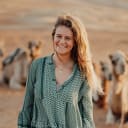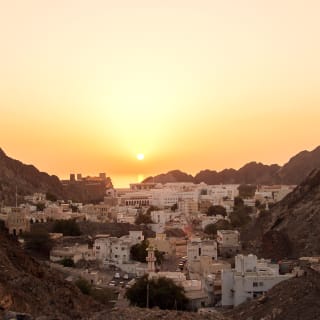
Camels in Oman
Camels in Oman
The Arabian camel is the undisputed favorite animal of the populations of the Arab world, and strictly speaking, it is called Dromedary Camel or Camelus Dromedarius. The one-humped Camelus Dromedarius differs quite clearly from its two-humped cousin, the Bactrian Camel. However, both belong to the camel family and therefore, a dromedary is always and above all a camel. Their natural habitats once included large parts of Asia and Africa, but as wild animals, the dromedaries have long since become extinct and nowadays they are found exclusively as domesticated animals or livestock. Anyone in the Arabian Desert, who encounters seemingly wild dromedaries can, therefore, rest assured that they belong to a proud owner somewhere not far away. On a final note, dromedaries have been domesticated in Arabia for more than 5000 years and are kept as farm animals.
Dromedaries are imposing animals with a shoulder height of up to 230 cm, a length of up to 340 cm and a weight of up to 710 kilograms. Not only are they optically adapted to blend in with their natural environment thanks to their sand-colored coats, but dromedaries defy the hot, dry desert climate with little difficulty and in fact require extremely little liquid to survive. Contrary to the erroneous assumption of some, the animals do not store water in their humps. The hump serves rather as a reserve of fat for periods when there is a deficiency of food and water. Dromedaries can easily withstand temperatures of more than 50°C thanks to their specialized survival capabilities. Their adaptation to the desert includes the ability to withstand a significant reduction in body temperature during the night, than to sweat less by very slow heating during the day, thus minimizing their loss of fluids. Another evolutionary feature is that dromedaries can lose up to 25 % of their body weight through sweating, but they can undo this in just a few minutes through the liquid intake.
Dromedaries are diurnal (daylight) animals that in natural conditions live in so-called harems. The usual herd consists of a male, several females and their offspring. As for food, they can eat almost anything including dried, thorny or even extremely salty desert plants.
Dromedaries reach a relatively high age of up to 50 years. The females mature sexually after about four years, while males only do so between the ages of four and six. The mating season for the animals is during the cooler winter months with the pregnant dromedaries carrying their offspring for just over a year. For about a year and a half after birth, the mothers take care of their foals before they are again ready for mating after about two years.
For Bedouins, the camel has always been of great importance and this is deeply rooted in Arab culture and is a contributing factor to the social standing of its owners. This importance can be seen in the Arabic language where there are over 150 different expressions for “camel”. Al-Jamal is the most common word for dromedary or camel and also means “admiration” or “to be admired”. For Bedouins who still live traditionally in the desert, the animal is much more than just a status symbol, it is also a means of transport and a source of meat, milk, and wool. However, camels are always owned by an individual person and are never tribally or family-owned. As with horse breeding, the breeding of camels also places great emphasis on having the best possible breeds and on the nobility of their ancestry.
In contrast to their relatives in other regions, Omani dromedaries are rather small but very fast runners with top speeds of up to 64 km/h. On the Arabian Peninsula, there are mainly camels from the Omani coastal regions of Batinah and Wahiba.
The breeding of racing camels is a very lucrative business in the region. Unlike in Oman itself, enormous amounts are paid for racing camels in the neighboring countries and huge amounts of prize money are awarded for tournament victories. For most Omanis winning races and monetary success play a rather secondary role. For them, the Dromedary is, above all, a matter of the heart and serves more as a statutory symbol of social prestige.
Discover Oman with experts who have called it their home
Your dream holiday, tailor-made by experts.
We don't just know Oman from books, we visit the country several times a year to experience the culture, landscape and people first-hand.
From your first enquiry to your return home, we are there for you personally - by phone, email or WhatsApp, whenever you need us. Our trips are as unique as you are: individually planned and provided with exclusive privileges and high-quality arrangements that will make your trip unforgettable.
Experts for your Oman trip









